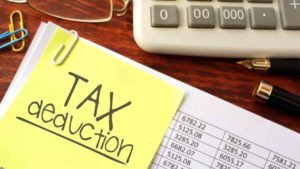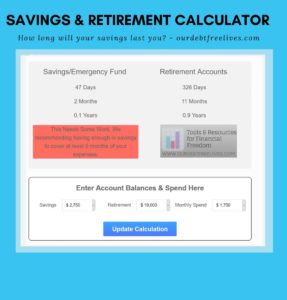Always Know Your Number
Financial independence and early retirement will vary depending on your situation, wants, and needs. If you have a family with a van load of kids, it’s probably more than if you are single and just need to take care of yourself. If you’re living in a big city like New York, Paris or Tokyo, you need more than those living in smaller cities and rural areas. The important thing is that you know your number. It should be one of your main goals in life. Because once you reach that number, you are financially free. Ask yourself, “How much do I need to live how I want for the rest of my life?” Everything beyond that is gravy. Personally, I like gravy. By the way, that was secret number one for wealth creation. – Always know your number. Few great things are accomplished without a well-defined goal.
My Path to Financial Independence and Early Retirement
Growing up my dad would always say “You have two choices! You can work for your money, or you can have your money work for you!”. That stuck with me, so when I turned 18 I started contributing to my 401k plan. Over the next three years my contributions averaged $100 a month, which at the time was making around $20k a year. After I turned 21, I got a job at HP starting at $26k. Now that I had an extra $500 a month in my pocket, I felt “rich”. I decided I would add half to my 401k and the other half I could spend. This put my annual contributions at $4,200, plus HP’s match of 4% ($1,040), which meant I was adding $5,240 a year to my portfolio.
I knew that I wanted to buy a house, so at the age of 22 I created a budget that would allow me to have enough for a down payment when I was 23 years old. I finally had enough saved up for the down payment and purchase my first house at the age of 23. I lucked out and bought it towards the bottom of the market. Over the next few years as my salary began increasing I made to continue to increase my savings. Now, I’m 29 and my portfolio is just over $158k. Looking back I would of never imagined that by 27 I’d have over $100k in my portfolio.
They Crumpled In An Emotional Heap
More than once I saw one of neighbors crumble into an emotional heap when their careers stalled and their money train slowed to a crawl. They were shocked to find that they had little to nothing in reserve. It wasn’t like their business managers were ripping them off like you see on television or in the movies. Their business managers sent them monthly reports, informed their clients of all the major decisions and in most cases even had them sign documents authorizing their actions for their client’s money. Their clients just didn’t read the reports or understand the ramifications of their investments or finances. They were lazy or at least distracted by life like many of us.
It’s easy to shove your finances off to an accountant or business managers, after all they are trained in finance. They know what to do with my money… right? Train wrecks rarely happen because of technical failure. They happen because someone is not paying attention. Take responsibility for your own finances. Cash your own pay checks. Pay your own bills. Invest your own money. It’s really not as hard as it look–plus it’s good for you. Nobody will watch your money like you.
Two Secrets to Financial Independence & Wealth Creation
 Now I am going to give you the next two secrets for wealth creation… Always do the math and avoid complexity. Don’t leave the math to someone else. Do it yourself. It is really not that hard. Most investments can be calculated on the back of a napkin. And if they cannot be calculated on the back of a napkin, then run away really, really fast and don’t look back!
Now I am going to give you the next two secrets for wealth creation… Always do the math and avoid complexity. Don’t leave the math to someone else. Do it yourself. It is really not that hard. Most investments can be calculated on the back of a napkin. And if they cannot be calculated on the back of a napkin, then run away really, really fast and don’t look back!
If you cannot understand how an investment works, then don’t invest in it! There… I just saved you a million dollars. I hope you’re happy.
But seriously, complexity kills investments. The more complex a deal, the more likely it will fail. The main component to the financial crisis of 2008 was the failure of derivatives and guess what…almost nobody without a doctorate in mathematical analysis can really explain what derivatives do and how they function. The calculation of how a derivative works and when they “kick-in” is very complex. The failure of the derivatives caused a chain reaction that almost completely destroy the financial system of the United States and caused giant financial waves throughout the world.
So, let’s recap…
- Always Know Your Number
- Take Responsibility for Your Finances
- Do the Math Yourself
- Avoid Complexity
How to Calculate What You Need
Now you are saying “Hey, the title of this article promised to help me figure out how much money I need. So, what gives?” You right. I won’t cop out and I won’t be lazy. Here is the math.
You need to figure out how much you will spend each month once you are financially independent. That number is probably different from what you are currently spending. Here are a couple of reasons why.
What Not to Include
Once you have achieved financial independence, you do not need to spend money each month to invest or save for retirement. That is not to say that you don’t invest. You just don’t need to include it as part of your monthly nut. Also, do you plan on having a mortgage or car payments while you’re becoming financially independent? Most of you will not. Do you need as much life insurance? Probably not. Will you have credit card payments? I sure hope not. What are you going to do with all your free time? Travel? That costs extra. How about hobbies? (I always wanted to build a fully equipped woodworking shop with every kind of lathe, saw and gig that I could possibly want to use.) If you don’t have a mortgage, then you won’t have that big tax write-off. Better budget for it (Try our Budget Calculator). You get the point.
You will usually need to spend less on a monthly basis after you reach financial independence, even with the extras. So, do the math and find the number.
For this example, let’s say that you have paid off your house, car and credit cards, plus you are a travel bug that likes to go on a nice cruise twice a year to someplace sunny. Your number is $20,000 per month or $240,000 per year not counting inflation (we will get to that in a moment.) That’s a big number for some, not so big for others. The important thing is that you find your number.
What to Deduct
 Wait a minute…we can deduct some things because you probably have some future income already secured. How about Social Security? (Yeah, it will probably still be around even with all the politics). Do you have a retirement account? How about a life insurance annuity? Do you have rental income from real estate? What about dividends from a stock or bond portfolio? I get quarterly royalty payments from the movies I made. That counts! All steady future income lowers that annual $240,000 number. So, let’s say after you count all your future income, you lower the number to $160,000.
Wait a minute…we can deduct some things because you probably have some future income already secured. How about Social Security? (Yeah, it will probably still be around even with all the politics). Do you have a retirement account? How about a life insurance annuity? Do you have rental income from real estate? What about dividends from a stock or bond portfolio? I get quarterly royalty payments from the movies I made. That counts! All steady future income lowers that annual $240,000 number. So, let’s say after you count all your future income, you lower the number to $160,000.
Investable Assets and Inflation
Now, how much money would you need in investable assets to generate $160,000 per year? Also, how do we take into account inflation? I believe a properly diversified investment portfolio can generate about 8% per year without taking too much risk. So, to generate $160,000 per year you would need about $2,000,000 in investable assets.
But wait… we need to take into account inflation. This is where it gets a bit tricky, because some of your future income like real estate, social security and stocks may have inflation compensation mechanisms or increases, while others like some pensions and bonds may not. Again, it is important that you do the math and figure it out now, so you don’t end up short.
So, let say we have calculated that one third of future income is covered by inflation increases and the other two thirds is not. I like the number 3% for inflation. It’s probably conservative and closer to 2%, but hey, that’s where the dart landed when I threw it at the inflation index dart board. Besides, 3% gives us a little cushion in case you live a longer than you planned. So, we need to make an extra 3% per year to cover the inflation on the $160,000 and an extra 1% on top of that to cover the loss due to inflation on some of our future income. That just cut our 8% interest in half and therefore doubled the amount of investable to about $4,000,000.
Getting to a Real Number
Now don’t panic. Yeah, that is a big number. But it is a real number. And now that you know your number, you can make a plan to achieve that number. Believe me… it’s doable. Most of us will never be able to save our way to that kind of number. However, I never liked making 2% on my money. I believe in high-yields of 10%-14% on my invested money. I know they are achievable. So, enough for today. Go get started on achieving financial independence! Follow my blog in the coming months, and with a little patience, a little math and some thoughtful consideration, I will show you how to make your number.

Pingback: How To Make Money Online - Tutorial - Debt Free To Early Retirement
Pingback: Retire Better With A Dividend Growth Investing Strategy - Debt Free To Early Retirement
Pingback: Debt Relief vs Debt Settlement - Our Debt Free Lives